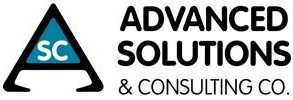Choosing an Enterprise Resource Planning (ERP) system can be a daunting task. The decision will affect your company for many years. There are several products on the market today, but it can be confusing to sort through all of the features and benefits to determine which solution is the best for your company. Consider then, the following five essential categories to focus on when evaluating ERP system requirements.
1) Productivity
An ERP system should be easy to implement, learn and use. It should work in the language that suits your company and your customers the best. The solution needs to be able to work in any currency, while also offering currency conversions. It should automate business processes, approvals and notifications. Artificial Intelligence (AI) in the ERP solution needs to align with automation, with the ability to streamline business processes through machine learning.
All of the ERP system’s information should be contained in a single database, without the need to maintain integrations between applications. This results in a “single version of the truth” available to all key personnel with access to the system from any device, anytime, anywhere. Staff and field personnel are then free to make informed decisions with no guesswork, even while working from home.
2) Functionality
The right ERP system will support the functions needed to run your business smoothly. This means supporting multi-site, multi-warehouse and international companies. An effective ERP will provide deep financial and accounting functionality, including facilitating financial consolidation, intercompany eliminations and reconciliations. It should support financial management through standard accounting such as the general ledger, payroll, cash management, tax management, product accounting and more.
It should support sales from creating quotes to checking inventory availability, running capable-to-promise (CTP), performing credit checks, and supporting the shipping and payment processes from start to finish. It should have integrated reporting tools and support specific industries. It should share a single database between ERP and CRM without synchronizing two databases containing the same information and have integrated business intelligence and eCommerce functionality.
3) Technology
Technological details tend to make one ERP solution quite different from another. For example, a modern ERP system is one that does not require software installation. Instead the software should be accessible on a standard browser. A responsive design is useful, if not essential—easy to use, and featuring a modern look and feel. The interface will ideally be customizable and flexible to meet your company’s unique needs. Integration and data management features are critical. Data visualization is also important, inclusive of the ability to export all data for reporting. Being able to upgrade when it is convenient is another aspect of ERP solutions that often gets overlooked until upgrade friction slows down operations.
4) Value
The best ERP systems are those that provide significant, tangible value to your company. Total cost of ownership (TCO) will ideally be as low as possible, taking into account all licensing, support, hardware, upgrade and hosting costs. It should be able to scale with the company as it grows and offer flexible licensing options. And, though it may seem like a technical issue, having multiple deployment options such as on-premises or in the cloud, has a lot to do with realizing value form the solution. Cloud deployment allows for the preservation of capital so it can be used for other business initiatives. The value of an ERP is directly related to the number of people using the system. The best ERP solutions will charge by resources used, not by the user.
5) Mitigation of Risk
As with any major IT purchase, migitation of risk is a seriuous factor to consider. Mitigating risk involves capabilities like disaster recovery and information security. However, risk can also arise from unpredictable spikes in costs. On a related front, delays in deployment or system upgrades threaten to disrupt business operatons. These are risks that a modern ERP should minimize.
Learn More in Our Guide: Navigating ERP Selection and Implementation
How can you maximize the benefits of ERP while minimizing the risks? Find out in “Navigating ERP Selection and Implementation: A 5-Step Process.” In this white paper, two ERP industry veterans share their decades of ERP implementation experience and reveal the practices that successful implementations all have in common, such as:
- Setting the project up for success before you even start looking at vendors.
- Putting together the right team.
- Selecting the best system for your company.
- Remembering key post-implementation issues.
Don’t miss this chance to get expert guidance for your ERP selection and implementation process. Download the white paper now.
We can help you evaluate the best ERP options for your business. Contact us to schedule a demo of Acumatica Cloud ERP, and we can discuss your specific needs in depth.

